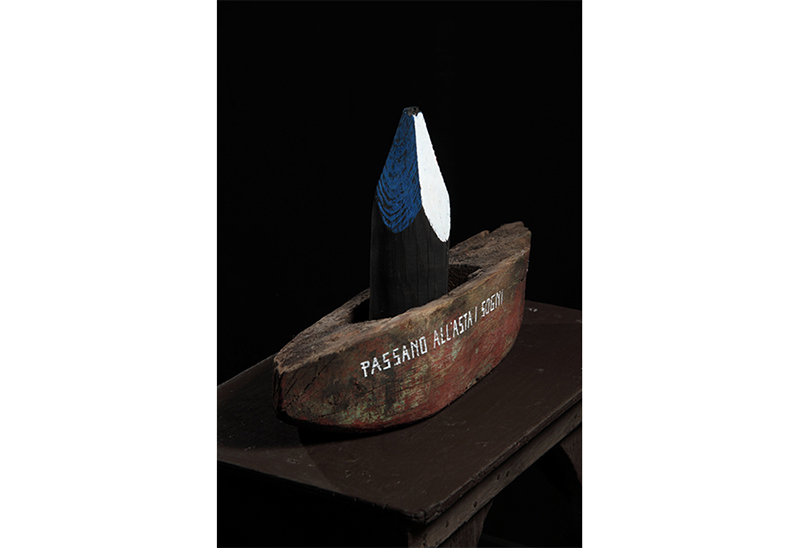Camminanti
"From the African coasts Sicily and Italy appear not as the beginning of a journey across Europe, but the goal of a journey that had its beginning very far, with unspeakable toil and hardship. Gulino begins to dedicate his painting to the epic deeds of clandestine migrants that have never been written. On the seashore he collects wreckages of history, wrecks of boats abandoned after the long crossing, hulks of shipwrecks. A trapezoidal board, with a red background, welcomes a white clandestinus like a lemur, contorted in insufficient space, its face contracted in a spasm like the woman of Guernica. However, this is not the typical clandestinus of Gulino. More frequently it is an androgynous type, like an acknowledgement of the indifference of the sexes in the face of tragedy (ecce homo is not ecce vir) that in some paintings takes place in an ironic debunking of false pietism. The pose of a crucified Christ, for example, is surmounted by a feminine head with heavy make-up, while two figures drawn from art nègre keep watch over it wearing unlikely shoes with pin-shaped heels. From the tragedy (doors that are inexorably shut, with cold geometry, latches and bolts) to the most mocking ballade. The "clandestinus" is he who has overcome the barriers and is inebriated with freedom. His irreverent metamorphosis is continuous. Even Sicily is now in stripes like the American flag and moves with the dancing steps, wearing heeled feminine shoes, while Ferdinandea returns to stir. In the middle of this collapse, even for Pier Paolo Pasolini, in some portraits that are dramatic but assailed like the father of Velàzquez under Bacon's brush, appears as "clandestinus", a true outsider, a prophet and witness in one, a key character in the theatre of Franco Accursio Gulino". (Carlo Bertelli, Franco Accursio Gulino. La ballata dei viandanti, in the catalogue for the individual show Camminanti-Wayfarers, Nairobi, 2011)
"Gulino's works transfer an intercultural reality that is deeply rooted in the peoples'desire to interact to a visual level. This is an interaction made possible by the instinct to move and travel, be it out of necessity or out of curiosity and the desire to discover different realities.
Franco Accursio Gulino's multiform production, far from being an expression of incomplete research, appears, instead, like the artistic transposition of this continous traveling, real and metaphorical, done by the human being since his appearance on the Earth" (Paola Imperiale, Wayfarers, in the catalogue for the individual show Camminati-Wayfarers, Nairobi, 2011)





















































